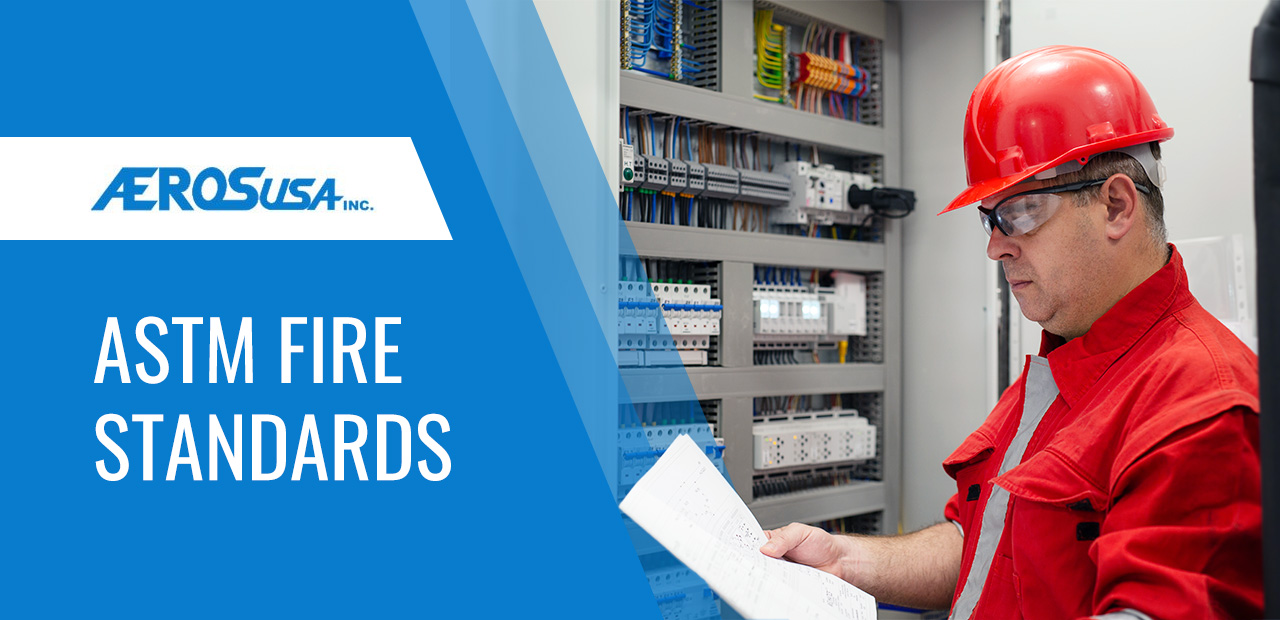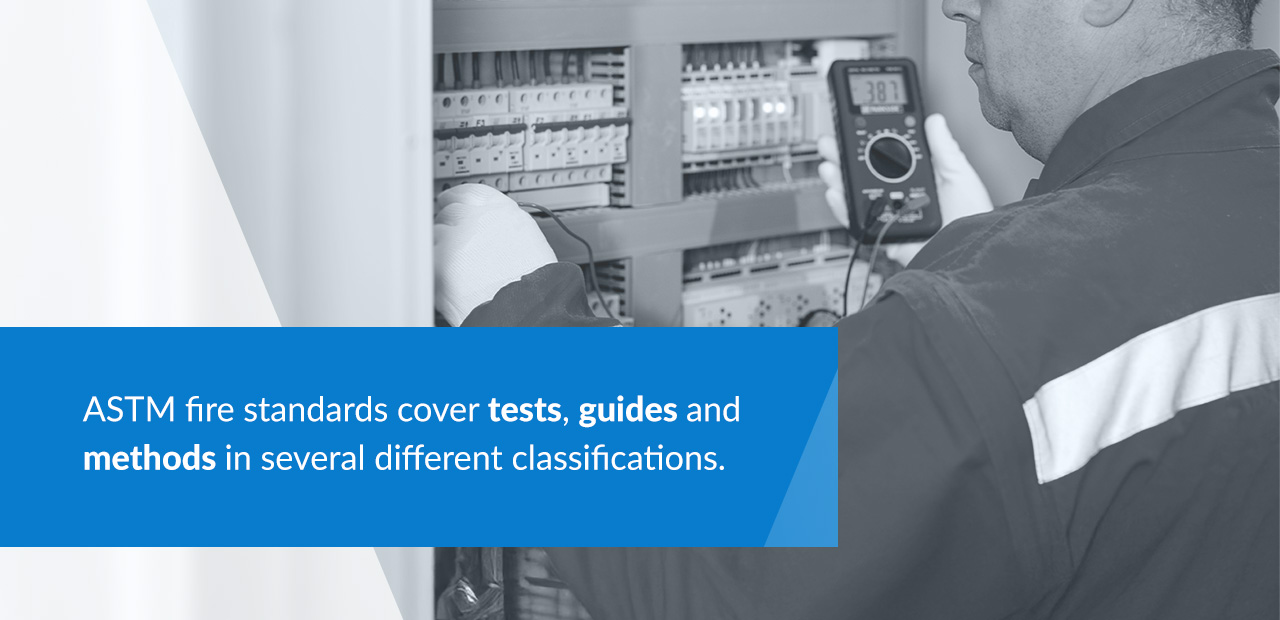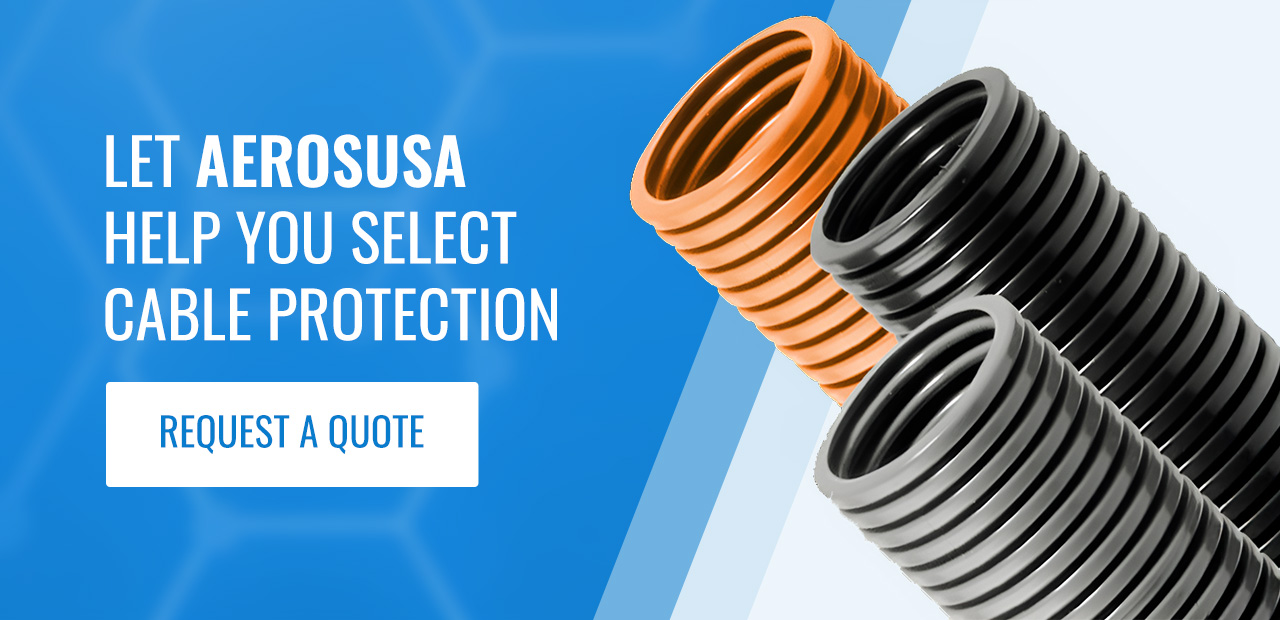
No matter your industry, the products you create must be safe. Complying with ASTM fire safety standards is one way to ensure your products meet a certain level of fire defense.
Learn more about ASTM fire standards, why they matter and where to get cable protection that helps you comply with them.
Table of Contents
What Is the ASTM?
ASTM International, formerly the American Society for Testing and Materials, is a global organization that creates voluntary standards for various materials, from lighting and electrical components to heavy machinery and medical tools. Their standards act like a common language to define testing methods and ideal product characteristics. When organizations say their products meet certain ASTM standards, their customers can feel confident that they will receive materials with consistent performance and known risk factors.
ASTM has over 35,000 members from more than 150 countries. These companies, government organizations and individual experts work together to agree on the standards. Organizations worldwide use over 12,000 ASTM standards and business services, helping everyone feel confident in their purchases.
Why Are ASTM Standards Important?
Complying with ASTM standards is generally voluntary. ASTM offers standards but doesn’t enforce or certify compliance. However, local laws, insurance providers and industry norms may require following ASTM standards to ensure safety and reliability while decreasing risk and liability.
Even if your organization isn’t required to adhere to ASTM standards, doing so can still be beneficial. Complying with ASTM standards can improve product quality and support customer confidence. Meeting these standards ensures your products meet certain thresholds for safety and quality and reduces the risk of electrical failures, fire hazards, property damage and injuries. Additionally, many consumers and businesses prefer companies that follow ASTM standards and are ASTM-certified since proven compliance guarantees better products and safety measures.
One advantage of using ASTM standards over other options is that these methods often test a generic component. As long as the part you choose matches the tested variable, you can differ in other characteristics. However, other standards and tests are restricted to the specific components tested, which can limit your suppliers or lead to more testing if you have several possible options.
ASTM Fire Standards Overview
ASTM has over 370 standards related to fire safety engineering and research. These standards and specifications cover flammability, smoke generation and performance during a fire.

ASTM fire standards cover tests, guides and methods in several different classifications. Here are some of the tests in each category:
- Combustibility: Tests for combustibility include E136-24c, E2187-24, E2652-22 and E2965-22a.
- Fire resistance: Test methods for fire resistance include E2748-23, E1725-23 and E2816-24.
- Transportation: Guides and specifications related to transportation include C1681-21, E2061-23 and E3134-20.
- Surface burning: Tests for surface burning include E162-24, E1317-19 and E2231-21.
- Fire safety engineering: Guides for fire safety engineering include E1546-24, E1591-20 and E3020-22.
- External fire exposures: These tests include E108-24, E2886 and E2912-17.
- Contents and furnishings: Tests for furniture include E1374-22, E1537-22 and E2280-21.
- Combustion and smoke products: Tests and guides include E622-21ae1, E800-20 and E3367-23.
Common ASTM Fire Standards
Some standards are used more frequently than others. Let’s look closer at some ASTM fire standards relevant to cables and wires:
- ASTM E162-24: The Standard Test Method for Surface Flammability of Materials Using a Radiant Heat Energy Source. It measures how fast flames travel along a material’s surface when it’s exposed to fire. Though it can assess how different products or assemblies respond to heat and flame, it cannot test all the factors related to fire risk and is not intended to rate building materials.
- ASTM E662-21ae1: The Standard Test Method for Specific Optical Density of Smoke Generated by Solid Materials. It measures how easy or difficult it is to see through smoke created by certain materials under certain conditions. However, they note that results may not be reproducible and cannot predict smoke generation under other conditions.
- ASTM E1354-23: The Standard Test Method for Heat and Visible Smoke Release Rates for Materials and Products Using an Oxygen Consumption Calorimeter that determines the heat and smoke generated when the test products catch fire, calculating heat release based on oxygen consumption. Though not included in the title, it also includes methods for determining a material’s ignitability, heat of combustion and mass loss rate.
- ASTM E1725-23: The Standard Test Methods for Fire Tests of Fire-Resistive Barrier Systems for Electrical System Components. It tests how a fire-resistive barrier prevents heat transfer to the electrical components it shields. The test must occur under specific laboratory conditions and allows you to extrapolate to conditions other than the one tested since the test is more extreme than what would happen in a functional system.
- ASTM D8354-21: The Standard Test Method for Flammability of Electrical Insulating Materials Intended for Wires or Cables When Burning in a Vertical Configuration. It assesses how well insulation protects electrical wires. The insulation can be tested on wires or on its own.
Choose the Right Cable Protection to Stay ASTM-Compliant
You may need to select specific cable protection products to comply with ASTM fire standards for wires and cables. You’ll also need to consider factors such as space available, weight, costs, abrasion risk and mechanical stress. High-voltage or outdoor systems require more robust protection than low-voltage indoor systems. Similarly, cables that move, such as in machinery and robotics, need more flexible protection that can withstand frequent bending.
Your main consideration will likely be the conduit material. Here are some of the more common conduit types:
- Metal: Metallic conduits can protect against heat, radiation, moisture, corrosion and abrasion. They are ideal for underground applications, chemical and wastewater processing and power generation.
- Plastic: Plastic conduit is exceptionally versatile since it encompasses various types of plastic. Polypropylene (PP), polyurethane (PU), nylon and flexible polyvinyl chloride (PVC) conduits protect against dust, liquid and damage. Some types, such as polyamide, offer enhanced heat and chemical resistance, but others may be susceptible to high temperatures.
- Liquid-tight: Liquid-tight conduit is available in PVC or PVC with a steel core. These types are also known as liquid-tight flexible non-metallic conduit (LFNC) and liquid-tight flexible metal conduit (LFMC).
- Specialty: Specialty conduits can have high-performance electromagnetic compatibility (EMC) shielding, resistance to high temperatures or fire, antimicrobial properties, food-grade materials and improved chemical or abrasion resistance.
Let AerosUSA Help You Select Cable Protection
AerosUSA, Inc. offers cable protection to meet ASTM fire standards. We provide protective conduits, sleeves, fittings and shields for electrical cables. As Flexa GmbH’s exclusive United States representative, we’re proud to serve many different industries, from mechanical engineering and renewable energy to robotics and construction. We have a vast inventory and will help you find the appropriate cable protection to ensure the safety and reliability of your products.
Learn more about AerosUSA’s cable protection products or request a quote today to find a solution that meets your needs.


